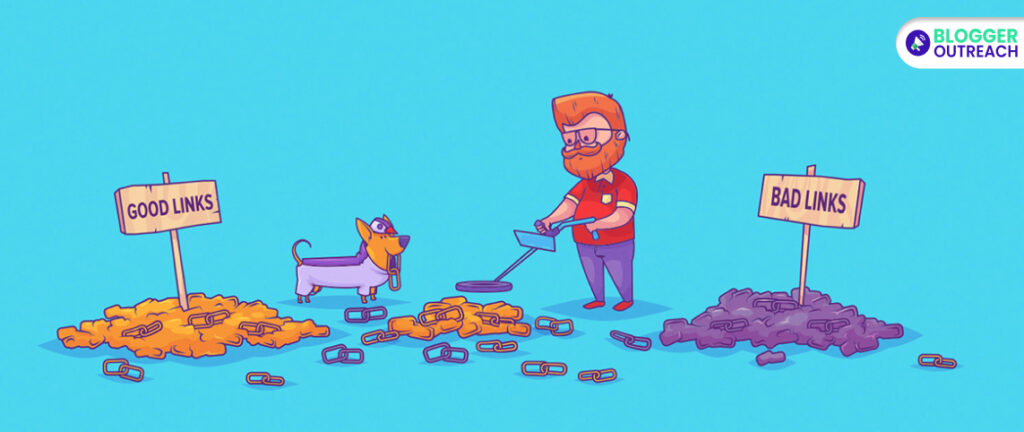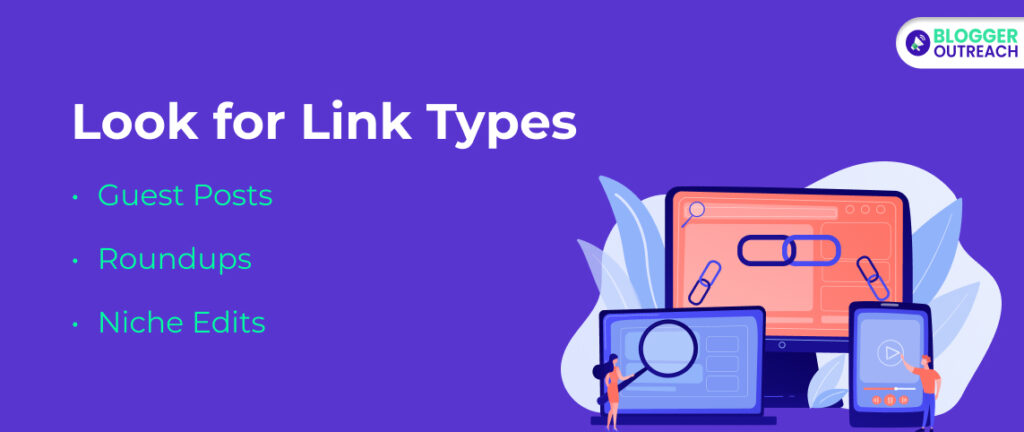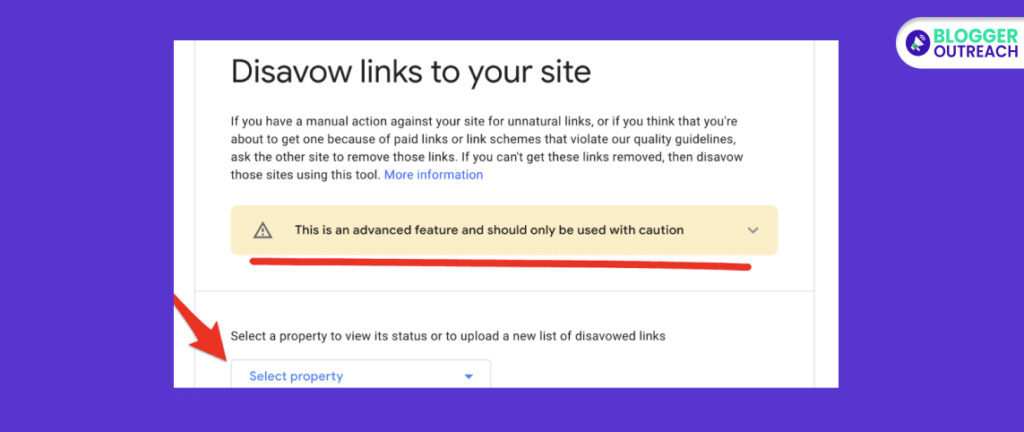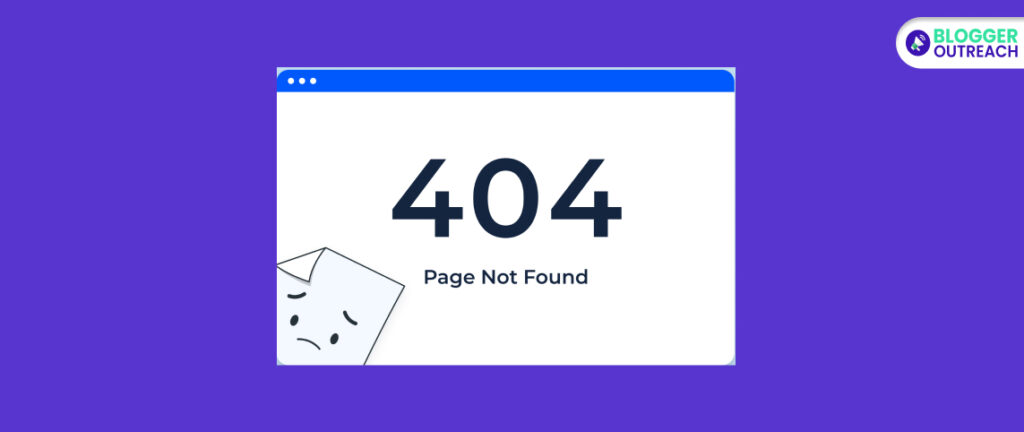Table Of Content
- 1 Let’s Understand Backlink Audit…
- 2 The Right To Backlink To Stay Penalty-Free
- 2.1 Step 1: Evaluate Your Website
- 2.2 Step 2: Discover The Content People Link To
- 2.3 Step 3: Look For Link Types
- 2.4 Step 4: Identify And Disavow Links
- 2.5 Step 5: Look For Content Refresh Opportunities
- 2.6 Step 6: Identify 404 Errors
- 2.7 Step 7: Check Out Your Competitors
- 2.8 Step 8: Check For A Negative SEO Attack
- 3 Final Verdict – Want A Penalty-Free Backlink Profile?
Have you received a link penalty?
A Google Penalty, a.k.a link penalty, occurs when a human evaluator determines that your link collection violates Webmaster Guidelines.
These penalties are generally imposed on websites with harmful, spammy, or risky links.
Hence, it becomes crucial to maintain a strong and safe network of backlinks for your website.
This is where a backlink audit comes into the picture.
Through strategic backlink audit, you ensure a healthy backlink profile.
If you want to maintain a risk-free backlink profile or struggle with link penalties…
…no need to worry.
We have seen a lot of clients not knowing about penalties and how to audit backlinks.
This article aims to share the right approach for doing so. Let’s start from the basics before we go deeper.
Let’s Understand Backlink Audit…

A backlink audit helps you check and analyze the links pointing to your website. It’s like examining your digital connections.
Why should you do it? Here’s the deal: Backlinks can boost your site’s ranking in search engines. But not all links are good. Some might harm your SEO.
So, you audit to find out which links are cool and which are not. You look for quality and relevance. If a link is fishy or coming from a sketchy site, it’s time to say goodbye.
The audit helps you spot issues and fix them. You may remove bad links or disavow them. This way, you keep your website healthy and improve your chances of ranking higher.
In a nutshell, a backlink audit is like a health checkup for your website’s connections. It keeps your SEO game strong and your online presence in good shape.
The Right To Backlink To Stay Penalty-Free
If you want to improve your website’s SEO performance, you need to conduct a backlink audit. Using backlink analysis, you can identify opportunities for growth and prevent damage to your site
Step 1: Evaluate Your Website

Begin by assessing your website’s current backlink profile.
Here’s What You Should Consider:
- Number Of Backlinks: Count all the links pointing to your site, including multiple links from the same domain.
- Number Of Referring Domains: Identify how many unique domains link to your site.
- Number Of Dofollow Links: Dofollow links are crucial for SEO, so track them separately.
- Your Website’s Authority: Check your domain authority (DA) score, which reflects the quality and quantity of your backlinks.
- Link Acquisition Rate: Evaluate how quickly your site is acquiring new links.
These metrics provide a clear snapshot of your website’s current backlink health.
Step 2: Discover The Content People Link To

Identify the content on your website that already attracts backlinks.
This Information Is Valuable For Several Reasons:
- Linkable Asset Outreach: Articles that people already link to are excellent candidates for outreach campaigns.
- Content Replication: Creating content similar to your existing link magnets can attract more backlinks.
- Internal Linking: You can redirect link juice from highly linked pages to other important pages on your site.
You can find your top-linked pages in tools like Google Search Console, Ahrefs, or Moz. Analyze what type of content attracts links and consider creating more of it.
Step 3: Look For Link Types

Identifying the types of links your site has can guide your future strategies.
Common Link Types Include:
- Guest Posts: These are articles on other websites linking back to yours.
- Roundups: Multiple experts provide opinions on a topic, and your site is mentioned.
- Niche Edits: Paid links where websites link directly to you for compensation.
Understanding your link portfolio helps you plan your backlink acquisition strategy.
Step 4: Identify And Disavow Links

Besides finding new opportunities, it’s crucial to protect your site by identifying and disavowing harmful links:
- Check For Manual Actions: Look for manual actions in Google Search Console and take steps to fix them.
- Identify Spammy And Toxic Backlinks: Remove links acquired from link farms, schemes, or irrelevant comments.
- Review Spam Score: Tools like Moz can help you identify high-spam-score links.
- Check ccTLD Distribution: Examine links from unrelated country code domains.
- Review Anchor Text: Ensure your anchor text aligns with your content to avoid penalties.
By disavowing harmful links, you can maintain your site’s credibility.
Step 5: Look For Content Refresh Opportunities

Identify pages on your site with many backlinks but low search traffic.
Consider Refreshing And Optimizing These Pages:
- Check Organic Referral Traffic: Use Ahrefs to see how much organic traffic these pages receive.
- Evaluate Reasons For Low Traffic: The page may be outdated, poorly optimized, or not align with searcher intent.
- Understand Searcher Intent: Analyze what search engines consider the searcher intent for your keyword.
Refreshing such pages can boost their search rankings and drive more traffic.
Step 6: Identify 404 Errors

404 errors can negatively impact user experience and link juice. Redirect old URLs to new pages to fix dead backlinks:
- Use Ahrefs: Find 404 errors with the “Broken backlinks” report.
- Set up 301 Redirects: Redirect old URLs to new pages to preserve link juice.
Fixing these errors ensures a smoother user experience and retains link authority.
Step 7: Check Out Your Competitors

Analyze your competitors’ backlink profiles to gain insights and improve your strategy:
- Compare Your Profile: See how your site stacks up against competitors.
- Identify Opportunities: Learn from their successes and discover new link-building tactics.
Studying competitor backlinks can help you refine your approach.
Step 8: Check For A Negative SEO Attack

Regular audits can help you detect negative SEO attacks aimed at undermining your site’s reputation. Be vigilant and take action to counteract any such attacks.
Final Verdict – Want A Penalty-Free Backlink Profile?
Always remember this…
Google strictly condemns black hat techniques…
…and considers anything that intends to manipulate the algorithm as strictly forbidden.
We encourage you to follow these 8 steps with utmost diligence.
Hold on…
What if we tell you that there is another smart way to do the same?
Have you ever come across the phrase “prevention is better than cure”?
Well, we are talking about high-quality niche backlinks. If your backlink profile is filled with these types of quality links, you will hardly need a backlink audit.
One smart way to do so is by working with experts.
BloggerOutreach is a leading SEO agency specializing in building backlinks through high-quality guest posts.
(because guest posting is still the best way to build high quality links.)
We Build Backlinks That Are:
- High quality
- Niche relevant
- Comes with quality content
- 100% indexation rate
- Permanent links
- Natural and optimized for SEO
- Comes from prominent sites with high DA, DR
If you want to know more, talk to our experts.
Read Also:








